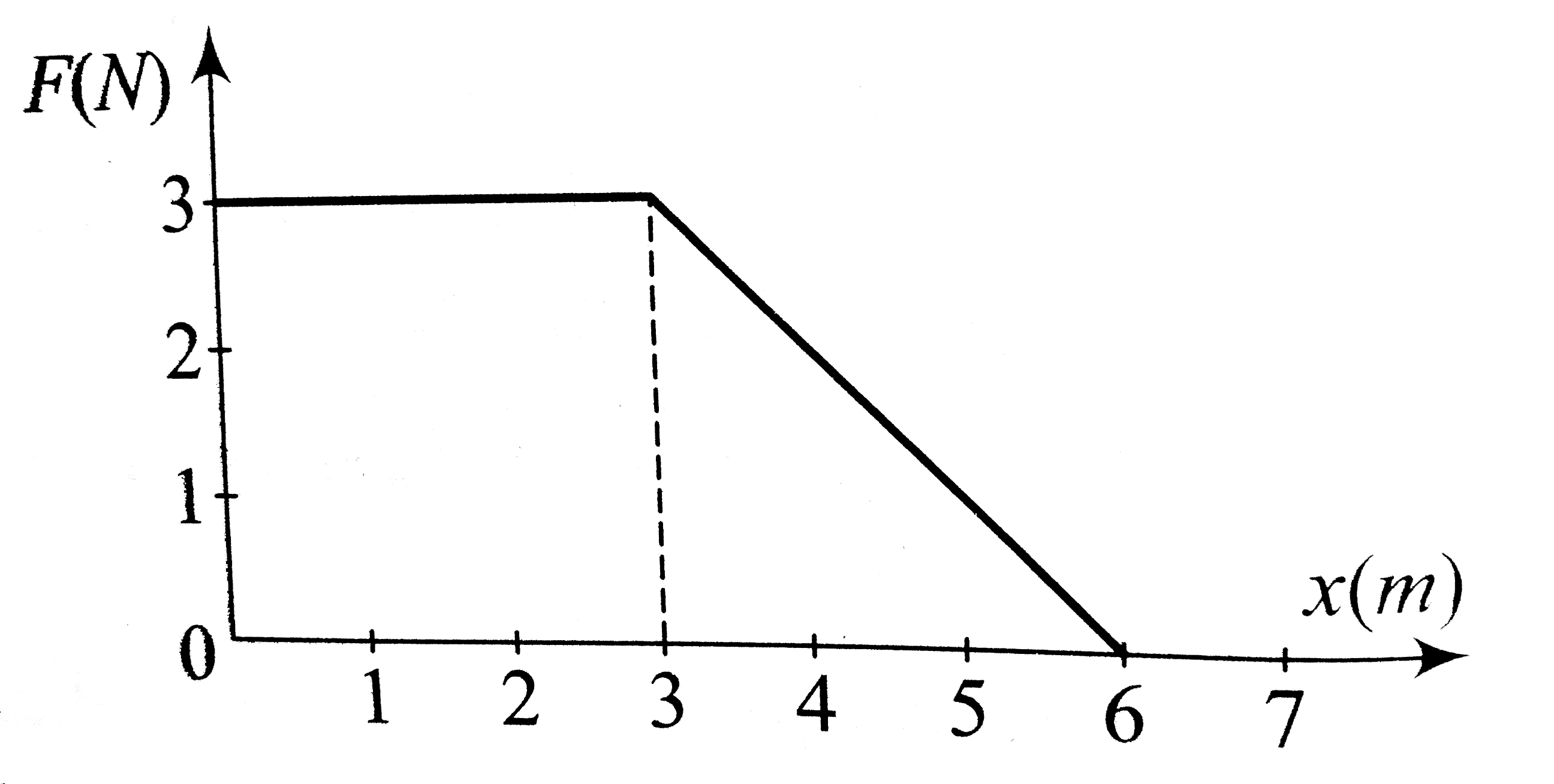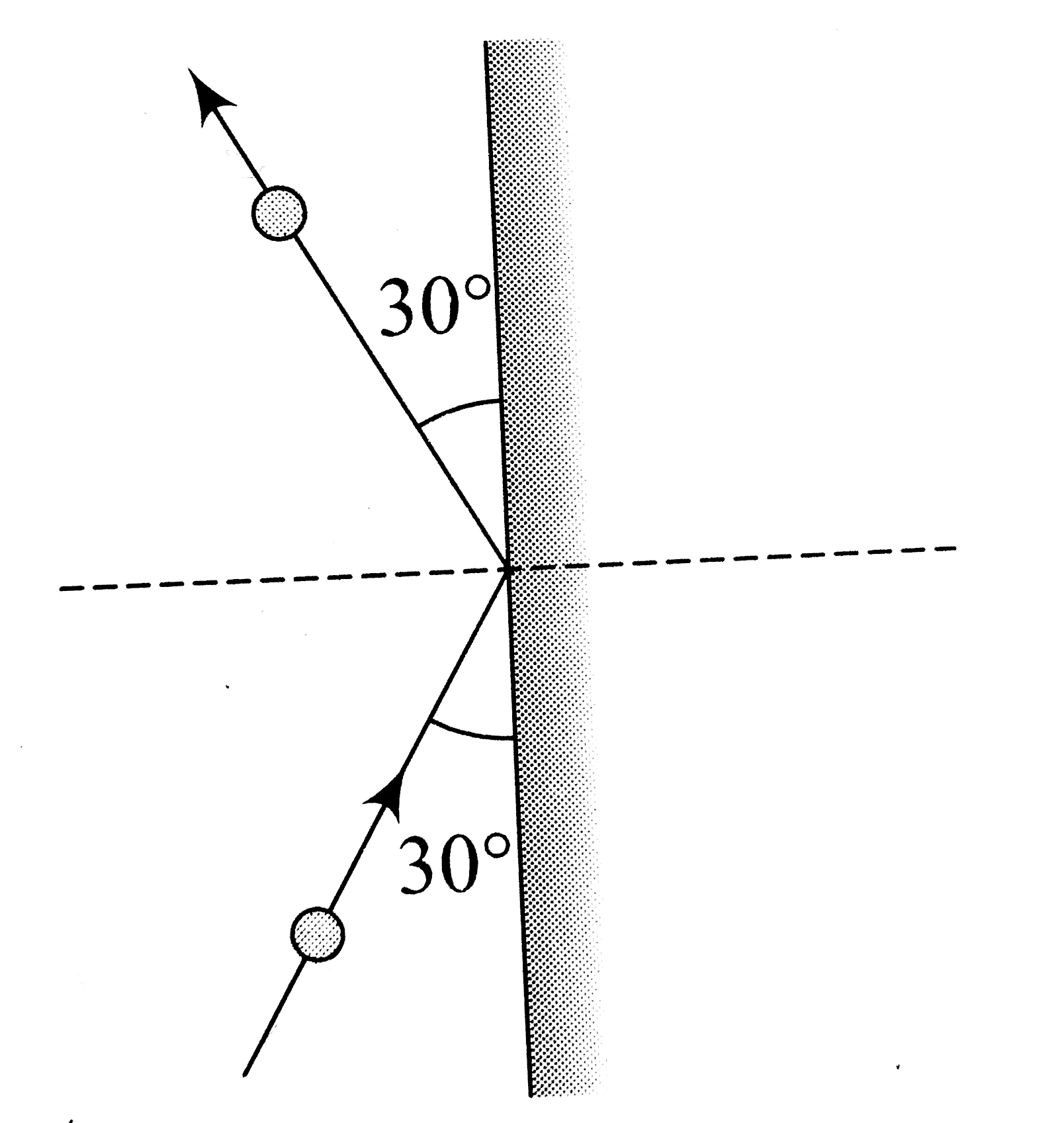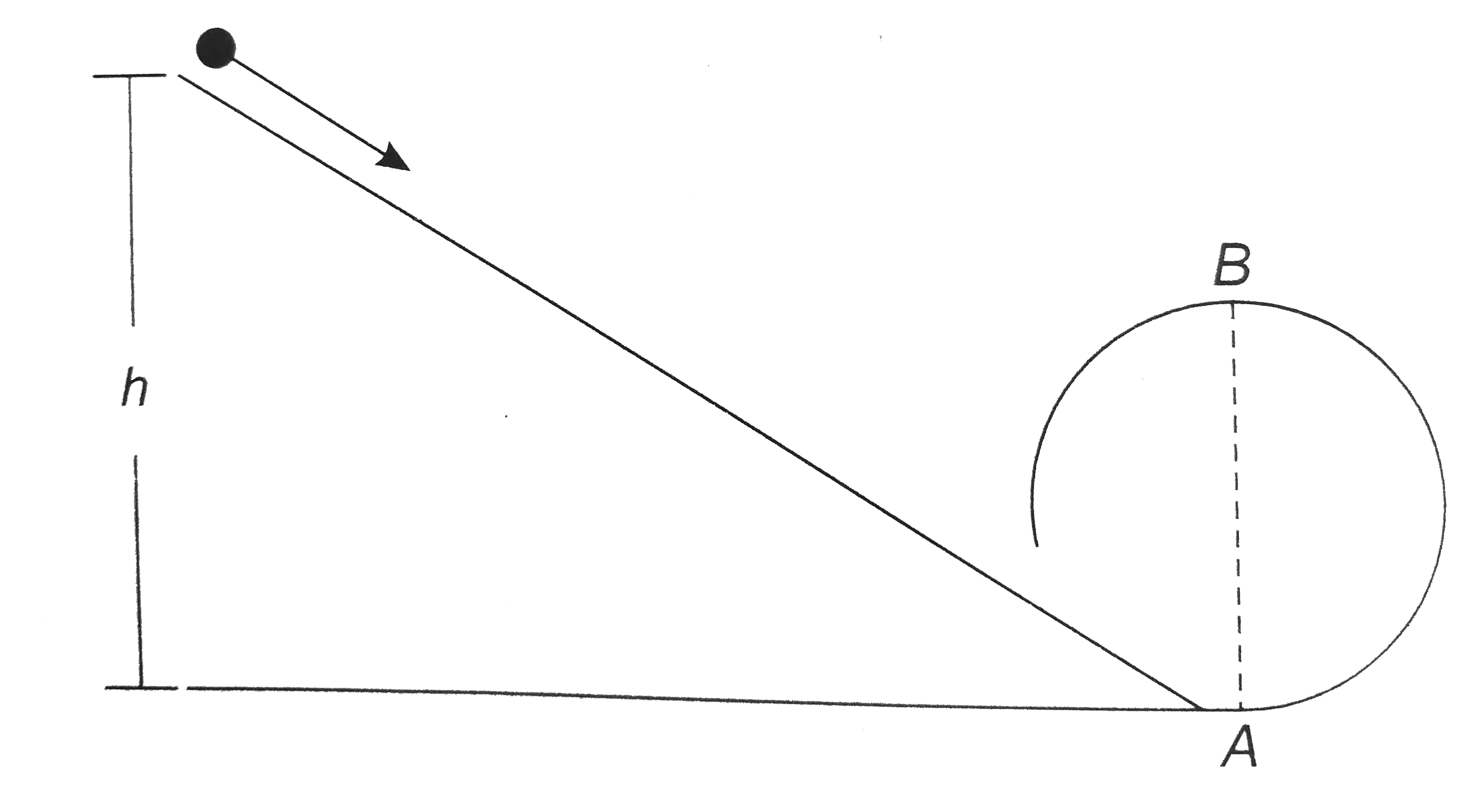Complete Solutions to NEET Questions of chapter WORK, ENERGY, POWER AND COLLISION of Class 11 book with complete answers and questions
| Class 11 | PHYSICS |
| Chapter | WORK, ENERGY, POWER AND COLLISION |
| A2Z | NEET Questions |
| Number Of Questions | 49 |
| Academic Year | 2023-24 |
A force of `2 hati + 3 hatj + 4 hatk N` acts on a body for `4` second and produces a displacement of `(3 hati + 4 hatj + 5 hatk)m`. The power used is
01:24View SolutionThe mass of two substance are `4 gm and 9 gm` respectively. If their kinetic energy are the same, then the ratio of their momrntum will be
01:15View SolutionA force `(vecF) = 3 hati + c hatj + 2 hatk` acting on a partical causes a displacement: `(vecs) = - 4 hati + 2 hatj + 3 hatk` in its own direction . If the work done is `6 j`, then the value of `c` is
01:06View SolutionThe potential energy of a certain spring when streched through a distance 'S' is `10` joule. The amount of work (in jule) that must be done on this spring to stretch it through an additional distance 'S' will be
04:01View SolutionA force `vecF = (5 hati + 4 hatj)N` acts on a body and produces a displacement `vecs = (6 hati - 5 hatj + 3 hatk)m`. The work done will be
00:45View SolutionA long elastic spring is stretched by `2 cm` and its potential energy is `U`. If the spring is stretched by `10 cm`, the `PE` will be
03:50View SolutionA stationary partical explodes into two partical of a masses `m_(1) and m_(2)` which move in opposite direction with velocities `v_(1) and v_(2)`. The ratio of their kinetic energies `E_(1)//E_(2)` is
01:21View SolutionA mass of `0.5 kg` moving with a speed of `1.5 m//s` on a horizontal smooth surface, collides with a nearly weightless spring of force constant `k =50 N//m` The maximum compression of the spring would be.
02:25View SolutionA stone tied to a string of length `L` is whirled in a vertical circle with the other end of the string at the centre. At a certain instant of time the stone is at lowest position and has a speed `u` . Find the magnitude of the change in its velocity as it reaches a position, where the string is horizontal.
02:56View SolutionA ball of mass`2 kg` and another of mass `4 kg` are dropped together from a `60` feet tall building . After a fall of `30` feet each towards earth , their respective kinetic energies will be in the ratio of
02:24View SolutionA bomb of mass `30 kg` at rest explodes into two pieces of mass `18 kg` and `12 kg`. The velocity of mass `18 kg` is 6 m//s`. The kinetic energy of the other mass is
01:12View SolutionA Force `F` acting on an object varies with distance `x` as shown in the here . The force is in newton and `x` in metre. The work done by the force in moving the object from `x = 0` to `x = 6m` is
 01:11View Solution
01:11View SolutionA body of mass `3 kg` is under a force , which causes a displacement in it is given by `S = (t^(3))/(3)` (in metres). Find the work done by the force in first `2` seconds.
04:06View SolutionA `0.5 kg` ball moving with a speed of `12 m//s` strikes a hard wall at an angle of `30^(@)` with the wall. It is reflected with the same speed and at the same angle . If the ball is in contact with the wall for `0.25 s`, the average force acting on the wall is
 02:07View Solution
02:07View Solution`300 J`of work is done in slide a `2kg` block up an inclined plane of height `10m`. Take `g = 10 m//s^(2)`, work done against friction is
01:15View SolutionA vertical spring with force constant `k` is fixed on a table. A ball of mass `m` at a height `h` above the free upper end of the spring falls vertically on the spring, so that the spring is compressed by a distance `d`. The net work done in the process is
05:05View SolutionWater falls from a height of `60 m` at the rate `15 kg//s` to operate a turbine. The losses due to frictional forces are `10%` of energy . How much power is generated to by the turbine? (g=10 m//s^(2))`.
01:33View SolutionA shell of mass `200g` is ejected from a gun of mass `4 kg` by an explosion that generate `1.05 kJ` of energy. The initial velocity of the shell is
04:01View SolutionAn engine pumps water continously through a hose. Water leave the hose with a velocity `v` and `m` is the mass per unit length of the Water jet. What is the rate at Which kinetic energy is imparted to water?
02:43View SolutionAn explosion blows a rock into three parts. Two parts go off at right angles to each other . These two are `1 kg` first part moving with a velocity of `12 ms^(-1) and 2 kg` second part moving with a velocity of `8 ms^(-1)`. If the third part flies off with a velocity of `4 ms^(-1)`. Its mass would be
02:21View SolutionA body of mass `1 kg` is thrown upwards with a velocity `20 ms^(-1)`. It momentarily comes to rest after attaining a height of `18 m`. How much energy is lost due to air friction? `(g = 10 ms^(-2))`
01:28View SolutionA ball moving with velocity `2 ms^(-1)` collides head on with another stationary ball of double the mass. If the coefficient of restitution is `0.5`, then their velocities (in `ms^(-1)`) after colllision will be
05:49View SolutionAn engine pumps water through a hose pipe. Water passes through the pipe and leaves it with a velocity of `2 ms^(1)`. The mass per unit length of water in the pipe is `100 kgm^(-1)`. What is the power of the engine?
02:49View SolutionThe potential energy of a system increased if work is done
03:43View SolutionA body projected vertically from the earth reaches a height equal to earth's radius before returning to the earth. The power exerted by the gravitational force is greatest.
09:26View Solutionforce `F` on a partical moving in a straight line veries with distance `d` as shown in the figure. The work done on the partical during its displacement of `12 m` is
 01:14View Solution
01:14View SolutionA mass `m` moving horizontal (along the x-axis) with velocity `v` collides and stricks to mass of `3m` moving vertically upward (along the y-axis) with velocity `2v`. The final velocity of the combination is
02:00View SolutionTwo sphere `A and B` of masses `m_(1) and m_(2)` respectivelly colides. A is at rest initally and `B` is moving with velocity `v` along x-axis. After collision `B` has a velocity `(v)/(2)` in a direction perpendicular to the original direction. The mass `A` moves after collision in the direction.
08:19View SolutionA car of mass `m` starts from rest and accelerates so that the instantaneous power delivered to the car has a constant magnitude `P_(0)`. The instantaneous velocity of this car is proportional to
00:57View SolutionA uniform force of `(3 hati + hatj)` newton acts on a partical of mass `2 kg`. Hence the partical is displaced from position `(2 hati + hatk)` metre to possion `(4 hati + 3 hatj - hatk)` meters. The work done by the force on the partical is
01:29View SolutionThe upper half of an inclined plane with inclination `phi` is perfectly smooth while the lower half is rough. A body starting from rest at the top will again come to rest at the bottom if the coefficient of friction for the lower half is given by
05:20View SolutionAn explosion blows a rock into three parts. Two parts go off at right angles to each other . These two are `1 kg` first part moving with a velocity of `12 ms^(-1) and 2 kg` second part moving with a velocity of `8 ms^(-1)`. If the third part flies off with a velocity of `4 ms^(-1)`. Its mass would be
02:21View SolutionA particle of mass 4 m which is at rest explodes into three fragments. Two of the fragments each of mass m are found to move with a speed v each in mutually perpendicular directions. The total energy released in the process of explosion is ............
04:47View SolutionA bolck of mass `10 kg` is moving in x-direction with a constant speed of `10 m//s`. it is subjected to a retardeng force `F=-0.1 x J//m`. During its travel from `x =20m` to `x =30 m`. Its final kinetic energy will be .
03:38View SolutionTwo springs have force constants `K_(1)` and `K_(2)` , where `K_(1)gtK_(2)`. On which spring, more work is downe if
(i) they are stretched by the same force?
(ii) they are stretched by the same amount?04:02View SolutionA particle of mass `m` is driven by a machine that delivers a constant power `k` watts. If the particle starts from rest the force on the particle at time `t` is
03:59View SolutionTwo point masses 1 and 2 move with uniform velocities `vec(v)_(1)` and `vec(v)_(2)`, respectively. Their initial position vectors are `vec(r )_(1)` and `vec(r )_(2)`, respectively. Which of the following should be satisfied for the collision of the point masses?
04:39View SolutionA ball is projected vertically down with an initial velocity from a height of `20 m` onto a horizontal floor. During the impact it loses `50%` of its energy and rebounds to the same height. The initial velocity of its projection is
05:46View SolutionOn a friction surface a block a mass `M` moving at speed `v` collides elastic with another block of same mass `M` which is initially at rest . After collision the first block moves at an angle `theta` to its initial direction and has a speed `(v)/(3)`. The second block's speed after the collision is
02:31View SolutionThe power of a heart which pumps `5 xx 10^(3) cc` of blood per minute at a pressure of `120 mm` of meteury `(g = 10 ms^(-2)` and density of `Hg = 13.6 xx 10^(3) km^(3))` is
01:58View SolutionA paritcal of mass `10 g` moves along a circle of radius `6.4 cm` with a constant tangennitial acceleration. What is the magnitude of this acceleration . What is the magnitude of this acceleration if the kinetic energy of the partical becomes equal to `8 xx 10^(-4) J` by the end of the second revolution after the beginning of the motion?
02:11View SolutionWhat is the minimum velocity with which a body of mass m must enter a vertical loop of radius R so that it can complete the loop?
03:06View SolutionAcceleration of a particle in x-y plane varies with time as `a=(2t hati+3t^2 hatj) m//s^2` At time `t =0,` velocity of particle is `2 m//s` along positive x direction and particle starts from origin. Find velocity and coordinates of particle at `t=1s.`
05:53View SolutionA bullet of mass `10g` moving horizontally with a velocity of `400 ms^(-1)` strikes a wooden block of mass `2 kg` which is suspended by a light in-extensible string of length `5m`. As a result, the center of gravity of the block is found to rise a vertical distance of `10cm` . The speed of the bullet after it emerges out horizontally from the block will be
06:25View SolutionTwo identical balls `A and B` having velocity of `0.5 m//s and -0.3 m//s` respectively collide elastically in one dimension. The velocities of `B and A` after the collision respectively will be
01:47View SolutionA partical moves from a point `(-2hati + 5hatj)` to `(4hati + 3hatj)` when a force of (4hati + 3hatj) N` is applied . How much work has been done by the force?
03:41View SolutionA raindrop of mass `1g` falling from a height of `1km` hits is the ground with a speed of `50 ms^(-1)` If the resistance force is proportion to the speed of the drop, then the work done by the resistance force is`("Taking " g: 10ms^(-2))`.
01:52View SolutionA moving block having mass `m` , collides with another stationary block having mass `4m`. The lighter block comes to rest after collision. When the initial velocity of the block is `v`, then the value of coefficient of restitution `( e)` will be
01:42View SolutionA body initially rest and sliding along a frictionless trick from a height `h` (as shown in the figure) just completes a vertical circle of diameter `AB = D`. The height `h` is equal to
 07:17View Solution
07:17View Solution
NEET Questions questions and complete solutions for chapter WORK, ENERGY, POWER AND COLLISION of A2Z PHYSICS (HINGLISH) of Class 11
All Exercises from A2Z Class 11 PHYSICS WORK, ENERGY, POWER AND COLLISION
- AIIMS Questions
- Assertion Reasoning
- Chapter Test
- Circular Motion In Vertical Plane
- Collision
- Concept Of Work Done
- Conservation Of Mechanical Energy And Linear Momentum
- Mechanical Power
- NEET Questions
- Potential Energy, Conservative And Non-Conservative Forces
- Problems Based On Mixed Concepts
- Work-Energy Theorem
